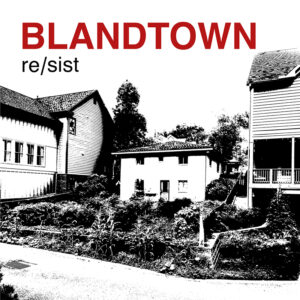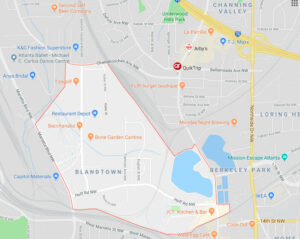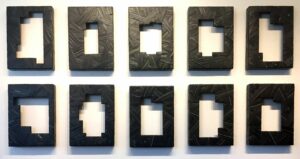Gregor Turk’s studio is one of just four original homes left in the neighborhood
By Josh Green@JoshGreen1234 Sep 6, 2019, 2:24pm EDT

Images courtesy of Gregor Turk
Named for freed slave Felix Bland, Atlanta’s Blandtown was once an African-American community comprised of more than 200 homes, situated west of Midtown and roughly bordered by Chattahoochee Avenue, Howell Mill Road, Marietta Boulevard, and railroad lines that helped forge the area’s industrial identity.
By 2002, just 20 of those original homes remained standing.
Today, it’s four.
A native Atlanta with an MFA from Boston University who once served with the Peace Corps in Liberia, artist Gregor Turk entered this capricious landscape 16 years ago, buying and creating a studio of one of those four remaining Blandtown houses.
What he found was a neighborhood “strategically forced into decline” by its rezoning into an industrial zone in the middle of the past century—and a lack of permanence that’s only ramped up since.
Turk intends to confront those issues in a free exhibition that opens October 10 at downtown’s Gallery 72 titled, Reclaim/Proclaim [Blandtown].

Google Maps
Incorporating sculptures, photography, and works on paper, the exhibition aims to raise awareness of Blandtown’s history and changes, while asking why its proper name has been so derided, especially by developers who prefer monikers such as Upper Westside, Midtown West, or simply Westside. (Turk points to Boring, OR, Dismal, NC, and Normal Town in Athens as examples that off-kilter place names aren’t always shunned.) It runs through November 22.
By way of “wit, lamentation, and artistic probing,” per the exhibition’s description, Turk focuses on the demise and resettlement of Blandtown’s residential core.
Many of the pieces, he says, were fabricated with tossed-out building materials at a new Brock Built development that surrounds his studio called West Town, where residences begin in the $500,000s—an entry price not uncommon to the area.
“Over the past 16 years, I’ve watched the final demise of a long-established community and the start of a disparate new one,” Turk tells Curbed Atlanta, via email. “In interviewing former residents and other research, I felt it was important to share this knowledge, and to acknowledge what has transpired here. The past otherwise is completely disconnected to the present.

“I think [Blandtown] serves as an example for what’s happening to a number of neighborhoods in the city.”
Turk’s work deals primarily with history, signage, mapping, and place-marking.
In front of the same 70-year-old studio building, Turk erected a tongue-in-cheek “Welcome to the Heart of Blandtown” billboard a few years ago as a “history lesson” and “poke at the underbelly of Atlanta’s gentrification,” as he told Atlanta magazine. And you may recall a more haunting Turk installation—tightly cropped, oversized images of General William Sherman’s eyes, posted along the Atlanta Beltline five years ago.
Turk has work in the High Museum and permanent pieces at the Atlanta and Jacksonville airports.
The Blandtown pieces, he hopes, will shed light on issues applicable across Atlanta: legacy housing, gentrification, and conflicts borne of proximity between residential and industrial sites. He’s taken to calling himself a “one-man chamber of commerce” for his neighborhood.
“I see Blandtown,” Turk says, “with its history, the disregard for its residents, and transformation as a case study for land use and development in the greater city.”

Original article on Curbed.